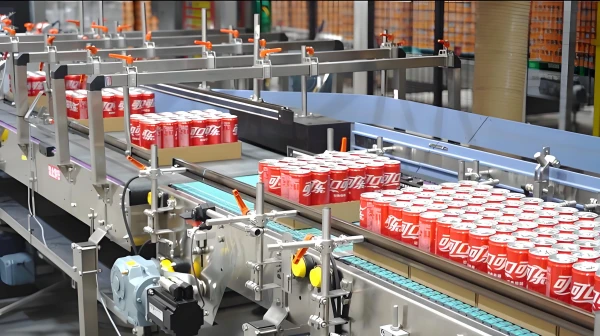Agility Meets Quality
The landscape for craft beverages is booming, but scaling production efficiently remains a key challenge. For small and medium-sized enterprises (SMEs), investing in flexible, cost-effective canning system technology is crucial. Modern solutions, including compact brewery canning line setups and versatile canning beer equipment, are revolutionizing how these businesses package beer, kombucha, RTD cocktails, and more. This article explores the key innovations and considerations driving this sector.

1. Technological Leaps: Precision & Flexibility
Modular Design: The Core of Adaptability:
Contemporary beer canning system solutions prioritize modularity. Instead of monolithic lines, breweries can integrate discrete modules – depalletizers, rinsers, fillers, seamers, labelers, packers – scaling up as needed. This drastically reduces initial CAPEX and footprint. A single can canning machine exemplifies this, allowing microbreweries to start small.
Enhanced Precision Control:
Advanced sensors and servo-driven mechanics on modern canning beer equipment ensure exceptional fill volume accuracy (±0.5% tolerance is achievable even on smaller lines) and consistent seaming integrity. This minimizes product giveaway and guarantees shelf life. Real-time monitoring provides immediate feedback for quality control.
Lightning-Fast Changeovers:
Downtime is profit lost. SME-focused beer canner systems feature tool-less or quick-change components for format adjustments (can sizes, lids). Automated recipe recall further slashes changeover times from hours to minutes, enabling efficient small batch production runs essential for seasonal offerings or limited editions. A well-designed single can canningmachine can switch formats in under 15 minutes.
2. Market Trends & Cost Imperatives
Rise of Craft & Diversity:
Consumers crave variety, driving demand for small-batch, innovative beverages. SME producers need canning beer equipment capable of handling diverse products (low-foam beer, carbonated kombucha, viscous juices) and can sizes (12oz, 16oz, 19.2oz, slimline).
Democratization of Canning:
High upfront costs were once prohibitive. Now, low-cost solution entry points exist, like semi-automatic single can canning machine units or modular systems allowing phased investment. Leasing options are also more prevalent.
Calculating True Cost:
Beyond the sticker price, SMEs must evaluate:
Operational Efficiency: Labor requirements, speed (Cans Per Minute – CPM), yield (fill accuracy).
Maintenance & Consumables: Ease of service, parts cost, CO2/N2 usage.
Scalability: Cost to add modules vs. replacing the entire line.
Cost & Output Comparison: SME Canning Solutions
| Feature | Semi-Auto Single Can Canning Machine | Compact Modular Brewery Canning Line | Traditional Large Line |
|---|---|---|---|
| Approx. Output (CPM) | 5-15 | 15-50 | 100+ |
| Footprint | Very Small | Small/Medium | Large |
| Initial Investment | $15k – $50k | $75k – $250k | $500k+ |
| Labor Required | 2-3 Operators | 1-2 Operators | Minimal (Automated) |
| Changeover Speed | Moderate (15-30 mins) | Fast (5-15 mins) | Slow (60+ mins) |
| Best For | Very Small Batches, Startups | Growing SMEs, Diverse SKUs | High-Volume Production |
3. Sustainability & Long-Term Value
- Zero-Waste Ambitions: Modern canning system design focuses on minimizing waste. This includes:
-
-
Reduced Product Loss: Precise filling technology ensures minimal overfilling. Dry-lube seamers eliminate messy lubricants.
-
Water Conservation: Closed-loop rinsing systems or air-rinse options drastically cut water usage (up to 80% reduction possible vs. traditional systems).
-
Energy Efficiency: Optimized motors and on-demand utilities reduce power consumption.
-
-
Nitrogen (N2) Flushing: Preserving Freshness: Oxygen is the enemy. Integrated N2 flushing in beer canner systems purges air from the can before filling and after lid placement (under-lid gassing), dramatically reducing dissolved oxygen (DO) levels (<50 ppb achievable). This is critical for preserving hop aroma and preventing staling, extending shelf life significantly.
-
Investment Return (ROI): A well-chosen brewery canning line delivers tangible ROI:
-
Reduced Losses: Precise filling saves product; low DO extends shelf life, reducing spoilage.
-
Higher Margins: Canned products often command better margins than kegs and have broader distribution reach.
-
Operational Savings: Lower labor, water, energy, and CO2/N2 consumption compared to inefficient systems or manual processes.
-
Brand Enhancement: Professional packaging elevates brand perception.
-
Conclusion
The era of accessible, high-quality canning for SMEs is here. By leveraging low-cost solution entry points, embracing modular design for scalability, and investing in precision canning beer equipment with features like nitrogen flushing and zero-waste technology, small and medium beverage producers can achieve operational efficiency, superior product quality, and compelling sustainability credentials.
Whether starting with a single can canningmachine or implementing a full compact beer canning system, the focus on cost efficiency, flexibility, and ROI ensures these businesses remain competitive and responsive to dynamic market demands. Choosing the right canning system is an investment in growth and brand integrity.

